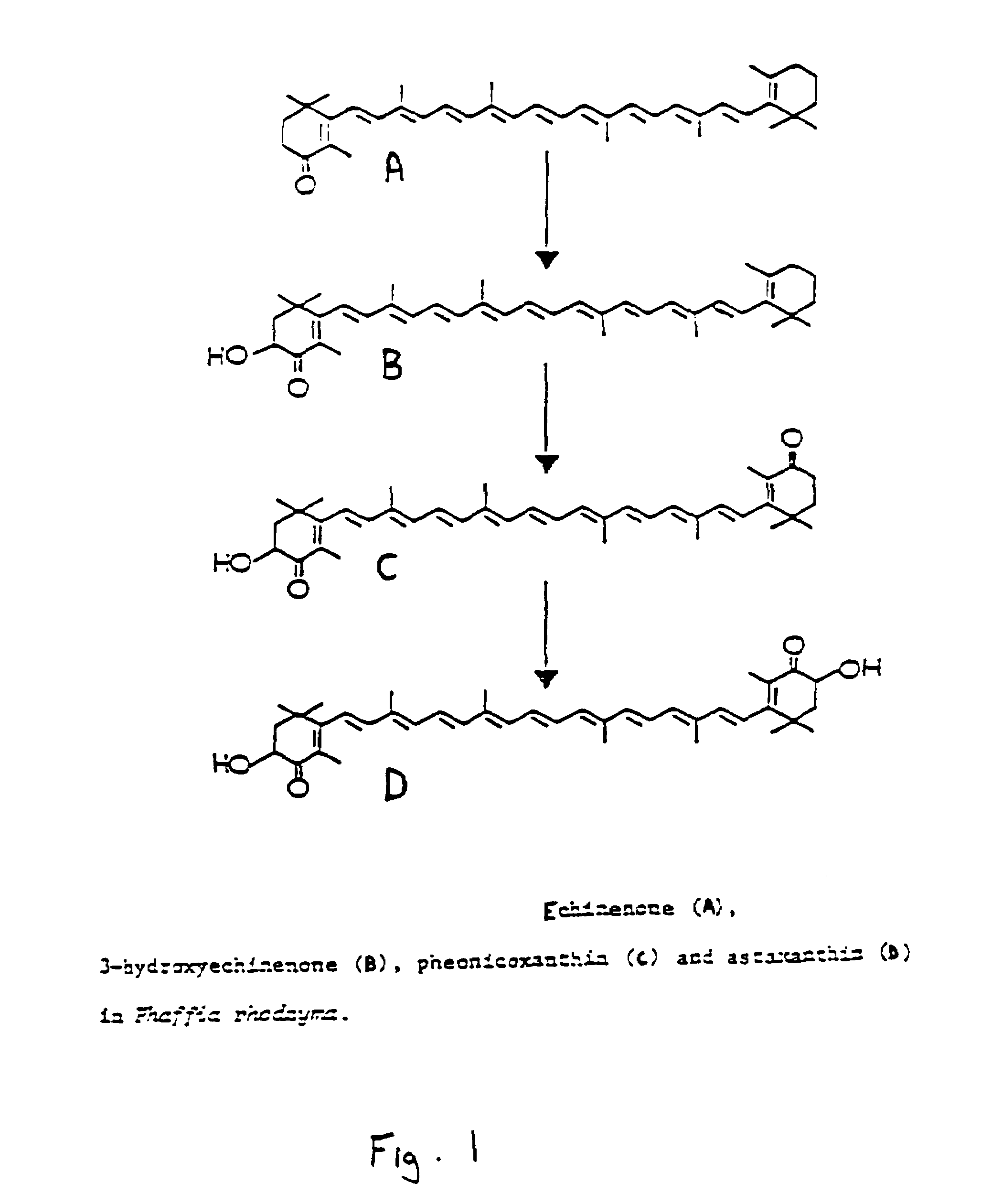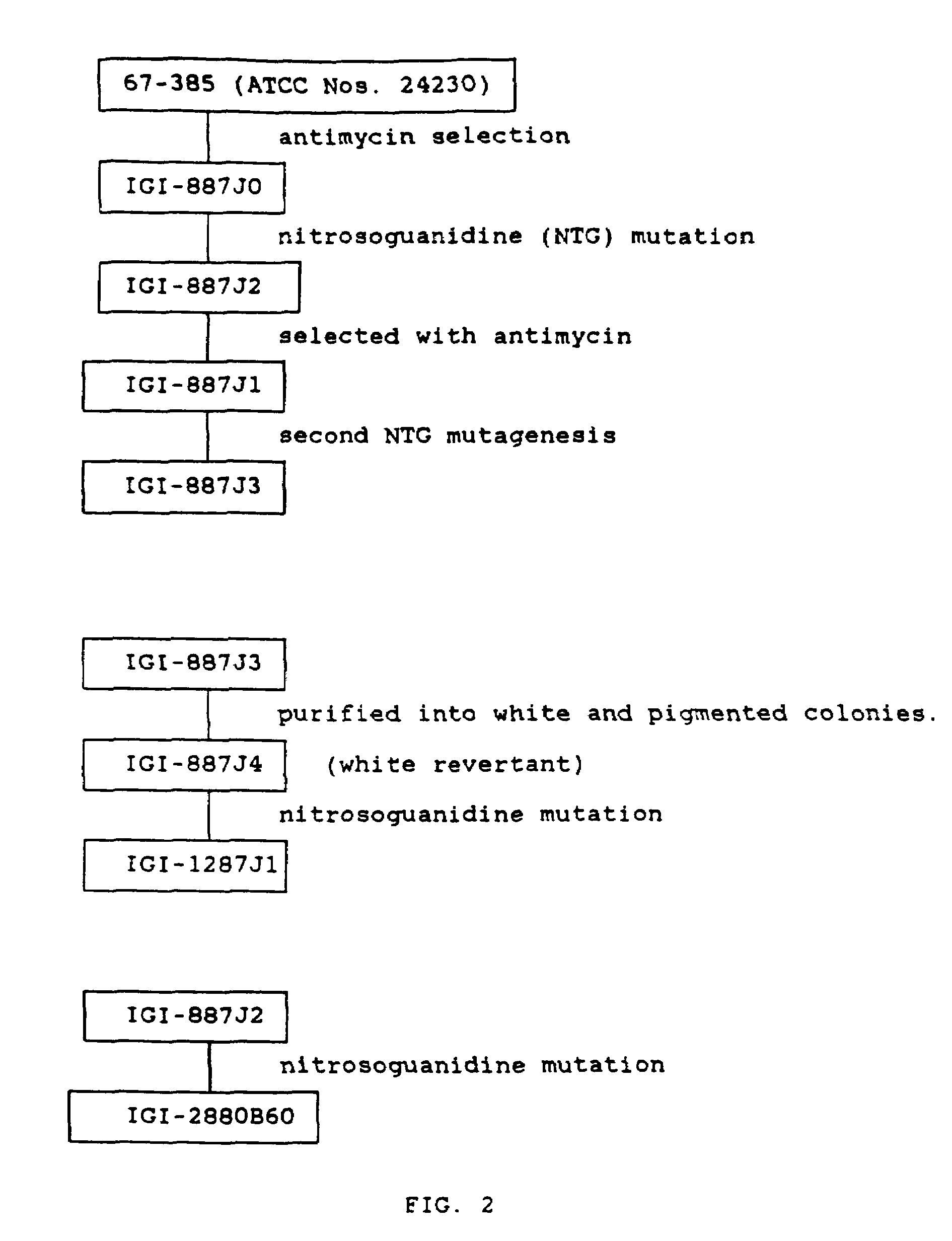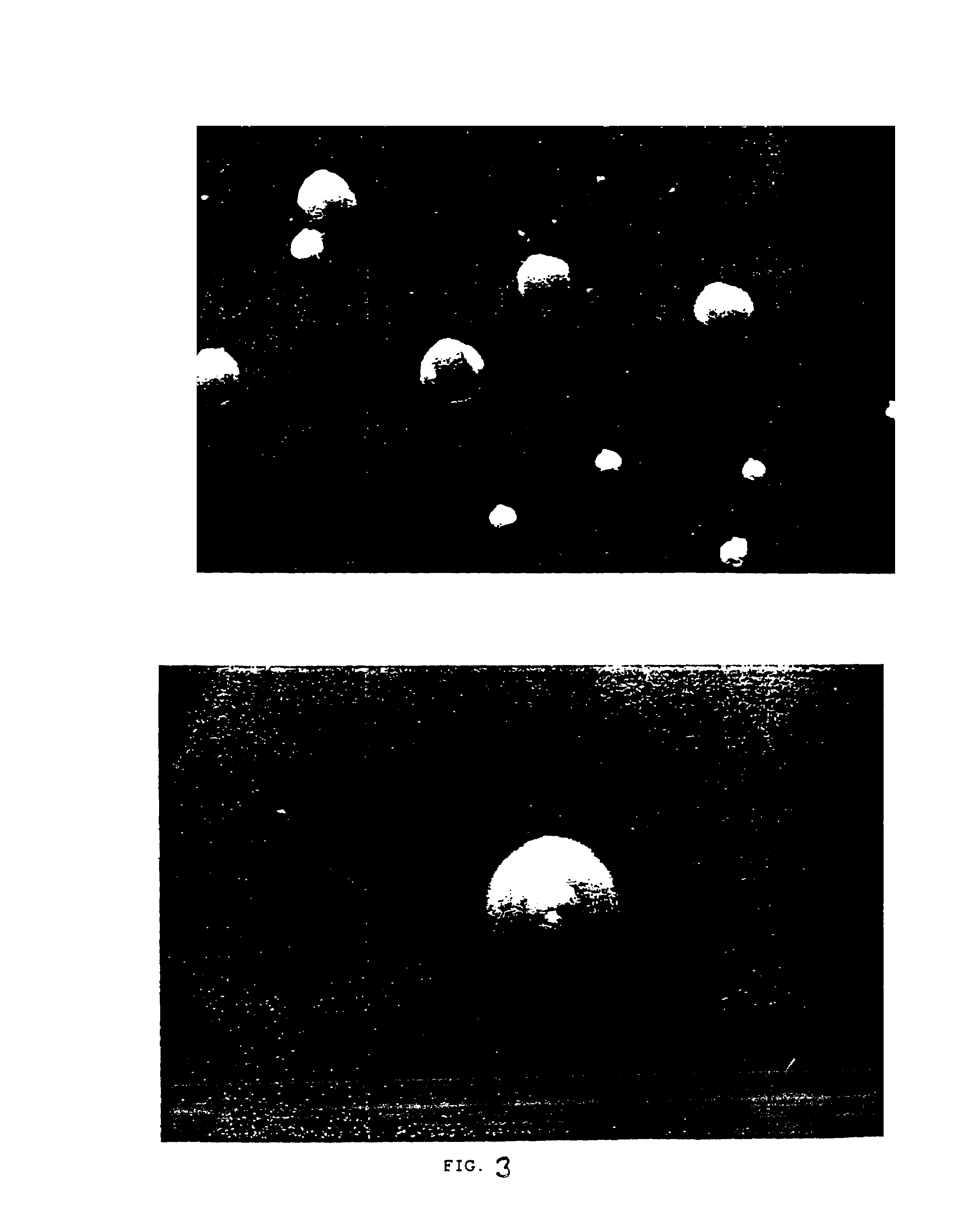Processes for in vivo production of astaxanthin and phaffia rhodozyma yeast of enhanced astaxanthin content
a technology which is applied in the field of in vivo production of astaxanthin and phaffia rhodozyma yeast of enhanced astaxanthin content, can solve the problems of limiting the inclusion of salmonid diets, low carotenoid content, and pale fish raised on fish farms or hatcheries
- Summary
- Abstract
- Description
- Claims
- Application Information
AI Technical Summary
Benefits of technology
Problems solved by technology
Method used
Image
Examples
example 1
[0078]Strain IGI 2880860 was mutagenized with ultraviolet light from a germicidal UV lamp at a distance of 12 inches from a saline suspension of cells for 1 min. (95.3% kill), 3 min. (99.4% kill), and 5 min (99.99% kill). Mutagenized cells were kept in the dark for 1 hr. following the period of mutagenesis and plated on yeast malt extract medium (YM) at several dilutions. Plates were incubated at 20° C. Dark red orange colonies were isolated on the basis of observed pigmentation differences and streaked to slants.
example 2
Nitrosoguanidine Mutagenesis
[0079]Stain 1287J1 was grown in YM for 48 hr. Cells were pelleted by centrifugation, the supernatant discarded, and the cells resuspended in 0.1 M citrate buffer, pH 5.0. Cells were treated with 100 μg / ml nitrosoguanidine (NTG) for 25 min. at room temperature without shaking. The suspensions were centrifuged, the supernatant decontaminated, and the cells were washed three times with 0.1 M potassium phosphate buffer, pH 7.0. Pellet was suspended in phosphate buffer and diluted into flasks containing 20 ml YM and shaken overnight. Cells were plated on YM and incubated at 20° C. Colonies were isolated on the basis of observed pigmentation differences, with the colonies characterized by dark reddish orange as observed under a dissecting microscope being selected, and streaked to slants. Three day old slants were used to inoculate YM flasks. One ml of YM medium was used to suspend the contents of the slant and this entire suspension was added to 250 ml flasks ...
example 3
Antimycin Treatment
[0081]Exponentially growing yeast cells of strain ATCC 24230, either NTG mutagenized as described under Step 1(a) above or non-mutagenized, were plated on YM medium containing 50 μm antimycin A (a mixture of antimycins A1 and A3; Sigma catalog #2006) and incubated at 20° C. until a colony grew. Growth took approximately one month. After two more weeks of incubation a red center appeared in the colony presenting a fried egg appearance. This red center was isolated to YM medium.
PUM
| Property | Measurement | Unit |
|---|---|---|
| pH | aaaaa | aaaaa |
| distance | aaaaa | aaaaa |
| thickness | aaaaa | aaaaa |
Abstract
Description
Claims
Application Information
 Login to View More
Login to View More - R&D
- Intellectual Property
- Life Sciences
- Materials
- Tech Scout
- Unparalleled Data Quality
- Higher Quality Content
- 60% Fewer Hallucinations
Browse by: Latest US Patents, China's latest patents, Technical Efficacy Thesaurus, Application Domain, Technology Topic, Popular Technical Reports.
© 2025 PatSnap. All rights reserved.Legal|Privacy policy|Modern Slavery Act Transparency Statement|Sitemap|About US| Contact US: help@patsnap.com



